Key takeaways:
- Selective mutism is an anxiety disorder where children can speak comfortably at home but struggle in social settings due to fear and anxiety.
- Common triggers include unfamiliar environments, social expectations, and overwhelming situations that can amplify anxiety.
- Building confidence can involve techniques like role-playing, setting personal goals for social interactions, and initiating conversations with open-ended questions.
- Sharing personal experiences helps raise awareness and fosters community support among individuals facing similar challenges.
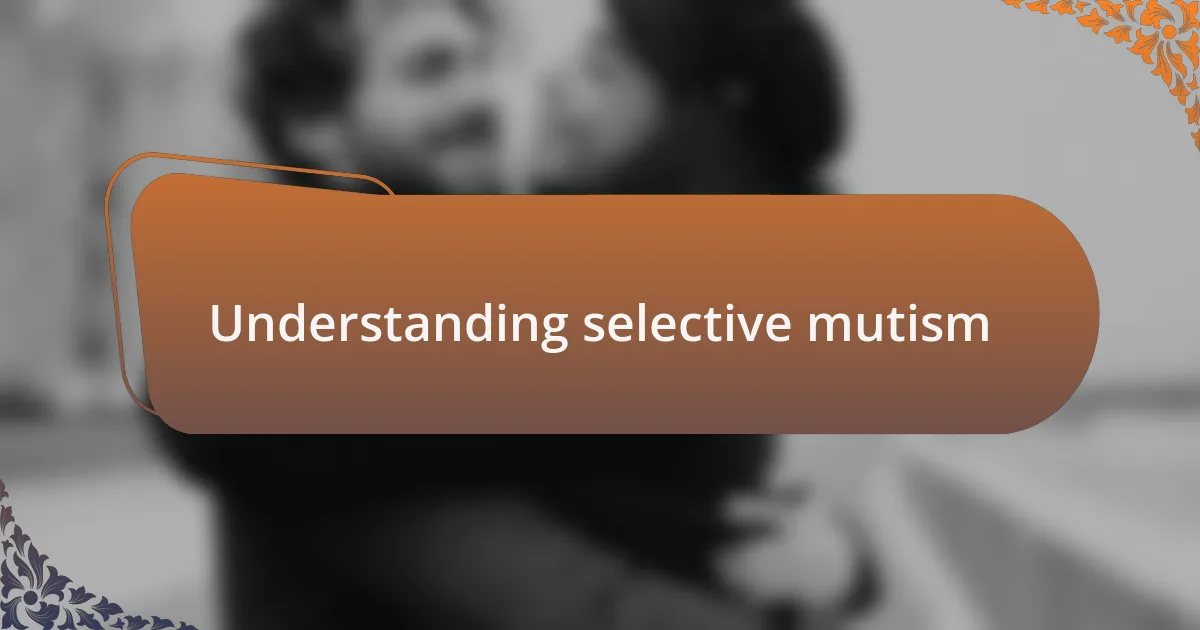
Understanding selective mutism
Selective mutism is a complex anxiety disorder primarily seen in children, where they struggle to speak in specific social settings despite being verbal in comfortable environments. I vividly remember my first experience witnessing this firsthand; a child whom I’d often see laughing and chatting freely at home sat silently in a classroom. It made me wonder, what could be causing such a profound disconnect?
The roots of selective mutism often intertwine with underlying anxiety and social fears. I’ve seen how external pressures and expectations can weigh heavily on those with this condition. Have you ever felt an overwhelming sense of dread when facing a social situation? Imagine feeling that intensely, day in and day out, just because of the fear of speaking.
Treatment can be a gradual process, often involving supportive environments, therapy, and patience. From my perspective, creating a safe space where individuals can express themselves without judgment is crucial. It’s heartening to see how small successes, like speaking in front of a trusted friend, can lead to significant breakthroughs in overcoming their challenges.
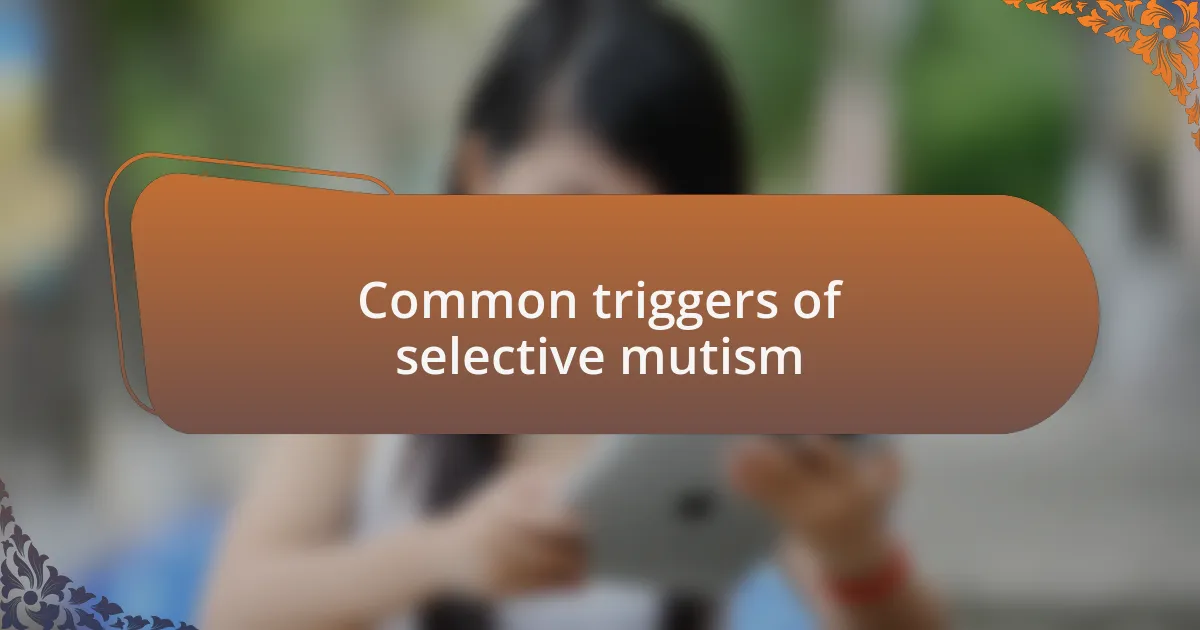
Common triggers of selective mutism
It’s fascinating yet startling how even seemingly harmless situations can trigger selective mutism. For instance, I once observed a young girl become completely non-verbal at her cousin’s birthday party. The overwhelming noise, unfamiliar faces, and pressure to engage created a perfect storm of anxiety for her. How can we expect a child to speak in such a chaotic atmosphere?
Transitioning to new environments often exacerbates these triggers. I remember attending a school event where a normally talkative child clammed up in front of their new classmates. It dawned on me that unfamiliar faces and the fear of judgment amplified their anxiety. The distress of being in a new setting can lead them to retreat into silence, reinforcing their struggle.
Social expectations play a crucial role as well. If a child feels that everyone is expecting them to perform or be outgoing, it can become paralyzing. Reflecting on my experiences, I recognize these moments can feel like a pressure cooker, leaving the child feeling isolated and misunderstood in situations where they should be enjoying themselves. What a true challenge it is to navigate communication under such weighty pressures!
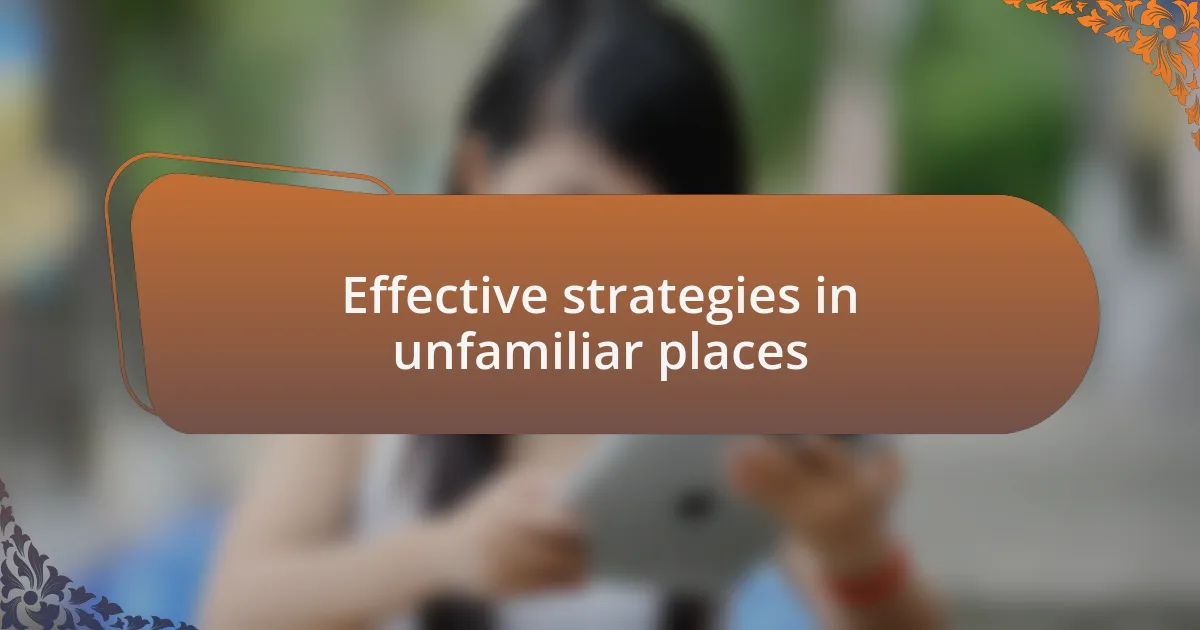
Effective strategies in unfamiliar places
Stepping into unfamiliar places can be daunting, even for the most confident individuals. I recall my first visit to a new café alone; the buzz of conversations and the smell of coffee swirling around me made it incredibly hard to speak up when ordering. It’s essential to create a small comfort zone, perhaps by bringing along a familiar object, like a favorite book or a small toy, to ease anxiety and remind oneself of home.
One effective strategy is to establish a routine when entering new environments. I remember attending a workshop where I felt overwhelmed at first. However, once I sat in a specific spot and took a few deep breaths, I noticed a significant shift in my comfort level. Simple practices, like having a familiar script for greetings or questions, can provide a lifeline in these situations, offering a sense of control amidst the chaos.
Additionally, sharing your feelings with a supportive friend can be incredibly beneficial. I often reminisce about a day when I faced a group presentation. Expressing my nervousness to a friend beforehand allowed me to verbalize my fears, which helped me approach the experience with a clearer mind. What if we all took that step to communicate our challenges? It could lead to a deeper connection and understanding, not just within ourselves, but also with those around us.
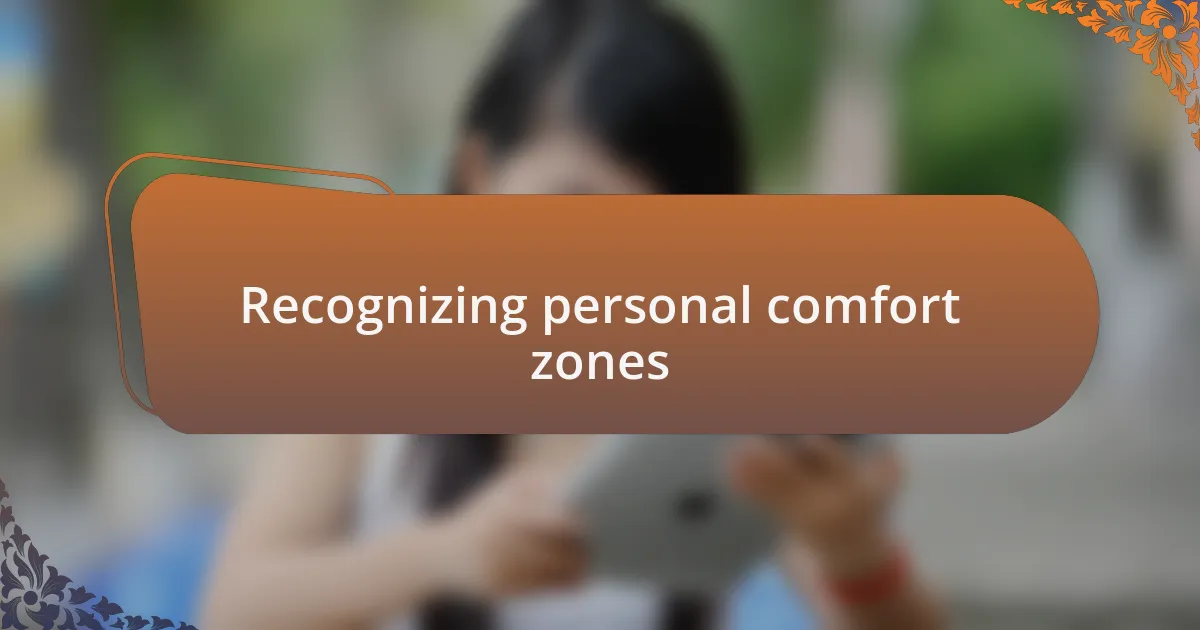
Recognizing personal comfort zones
Recognizing personal comfort zones can profoundly shape our experiences, especially in unfamiliar places. I remember the first time I stepped into a bustling market; my heart raced as I scanned the vibrant stalls. It struck me how I needed to find a corner to breathe, a small space away from the crowd where I could recharge before diving back into the chaos. Have you ever felt the pull of a particular spot that just felt “right”? Tuning into those small, quiet places can guide us in navigating discomfort.
It’s fascinating how our comfort zones can shift, often without us realizing it. During a recent trip to a new city, I found that sitting near a window became my little haven, allowing me a detached perspective while feeling connected to the world outside. It made me think: how often do we ignore our instincts in favor of stepping too far outside our boundaries? Recognizing where you feel at ease can help create a bridge to explore beyond those limits in time.
I believe comfort zones aren’t just physical spaces; they’re emotional ones too. Reflecting on moments when I hesitated to engage with strangers, I learned that even a simple act of acknowledgment—a smile or a nod—could transform my inner narrative. Have you tried that? The moment I shifted my focus from my anxiety to a friendly interaction, I felt a wave of relief, reminding me that connection often starts from within.
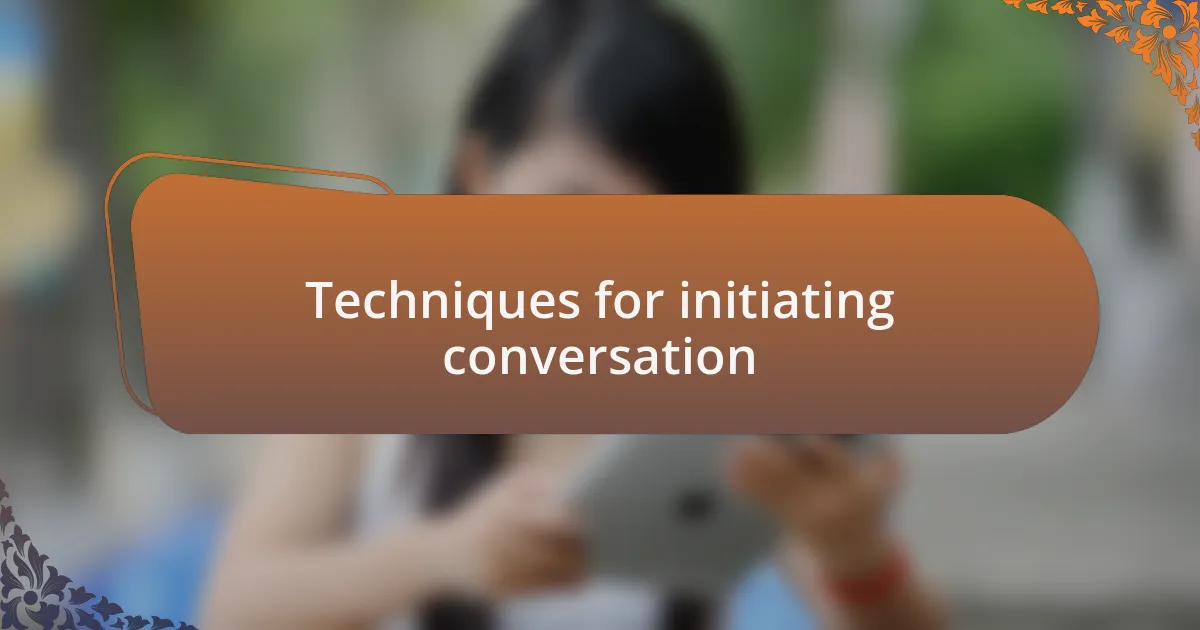
Techniques for initiating conversation
When it comes to initiating conversation, I’ve found that asking open-ended questions can be incredibly effective. For instance, when I was at a community gathering, I simply asked someone about their favorite local spots. Their eyes lit up, and suddenly, we were sharing stories about hidden gems we both loved. Have you ever noticed how a genuine question can shift the energy in a room?
I also recall a time when I attended a workshop in a new city and felt completely out of place. I took a deep breath and complimented the person next to me on their unique notebook. That small acknowledgment sparked a delightful discussion about our creative journeys. Sometimes, it’s the simplest observations that make us feel more connected. Don’t you think it’s interesting how something as trivial as a notebook can lead to meaningful conversation?
Another approach I’ve used is mirroring body language to create a sense of rapport. At a friend’s barbecue, I observed how others engaged with one another, and I mirrored their relaxed stance. It not only made me feel included, but it also encouraged others to approach me naturally. Have you ever tried mirroring someone’s energy? It’s fascinating how this subtle technique can help break the ice and foster conversations.
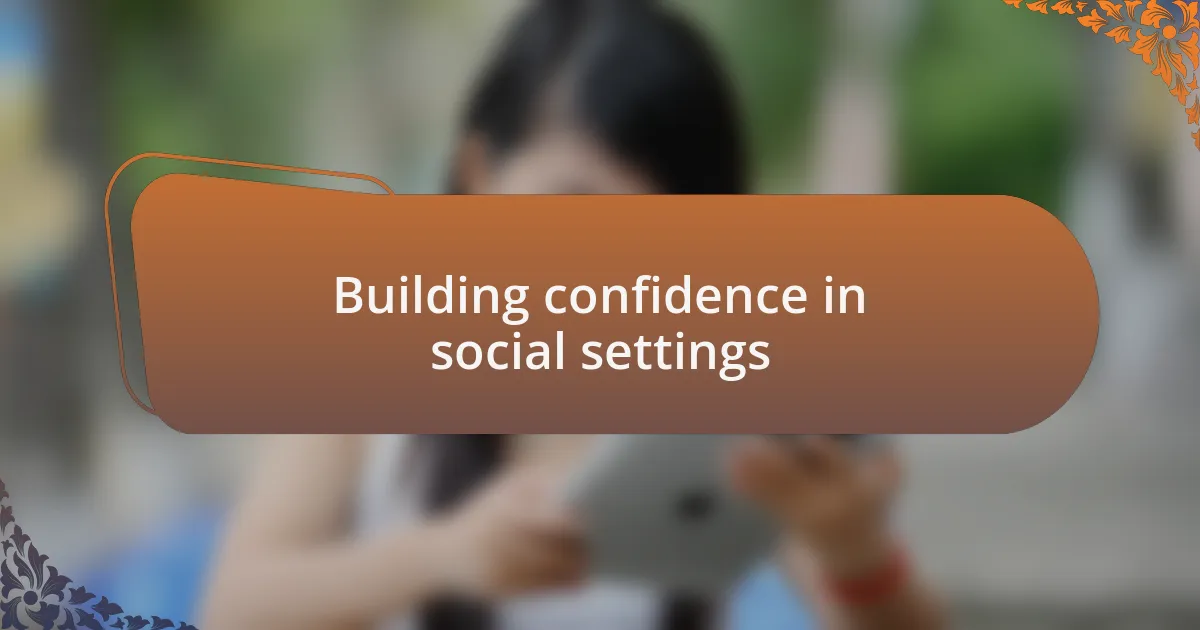
Building confidence in social settings
Building confidence in social settings often involves pushing past initial nerves. I remember attending a friend’s wedding where I was surrounded by unfamiliar faces. Instead of shrinking into the background, I decided to take a small step forward: I introduced myself to the person next to me while holding my sparkling water as if it were a shield. It was liberating to realize that a simple introduction could lead to laughter and camaraderie, making the event feel less daunting.
Embracing role-playing scenarios can also help build my confidence. Once, before a big family reunion, I practiced how I’d approach relatives I hadn’t seen in years. I envisioned possible conversations and even rehearsed my greetings in front of a mirror. This exercise transformed my anxiety into excitement. Have you ever thought about how visualizing a situation can change your experience of it?
Setting personal goals for each social outing has become a game changer for me. For instance, at a recent community event, I aimed not just to talk to one person but to engage with three. As I focused on this goal, I noticed my confidence grow with each interaction, turning what seemed like a challenge into a fulfilling experience. Isn’t it remarkable how setting small milestones can help shift our mindset in social environments?
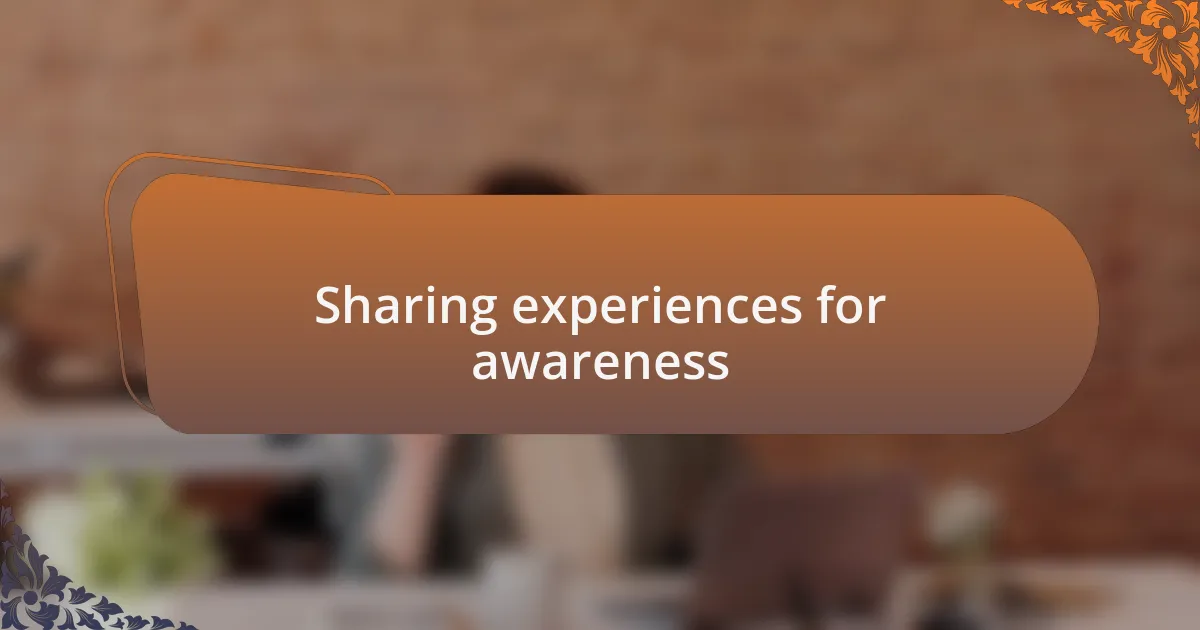
Sharing experiences for awareness
Sharing experiences is crucial for raising awareness about selective mutism. I recall a time when I participated in an online forum dedicated to discussing our challenges. Reading about someone else’s struggle with speaking up in class made me feel less isolated; it was a reminder that I wasn’t alone in my journey. Have you ever felt that comforting connection through shared stories?
Storytelling also empowers others. During a local support group meeting, I opened up about my own experiences with silence and anxiety. As I spoke, I saw nods of understanding from others, and their appreciative smiles reminded me that vulnerability can foster community. It struck me that when we share, we’re not just revealing our fears; we’re also giving permission for others to express theirs.
The impact of sharing can ripple outward in unexpected ways. I once shared my tale of using art to express myself when words felt stuck. This led a fellow attendee to pick up a sketchbook and explore their feelings through drawing. Seeing that transformation reminded me how personal experiences, when shared, can inspire and uplift those navigating similar paths. Isn’t it fascinating how one story can ignite a spark in someone else’s life?